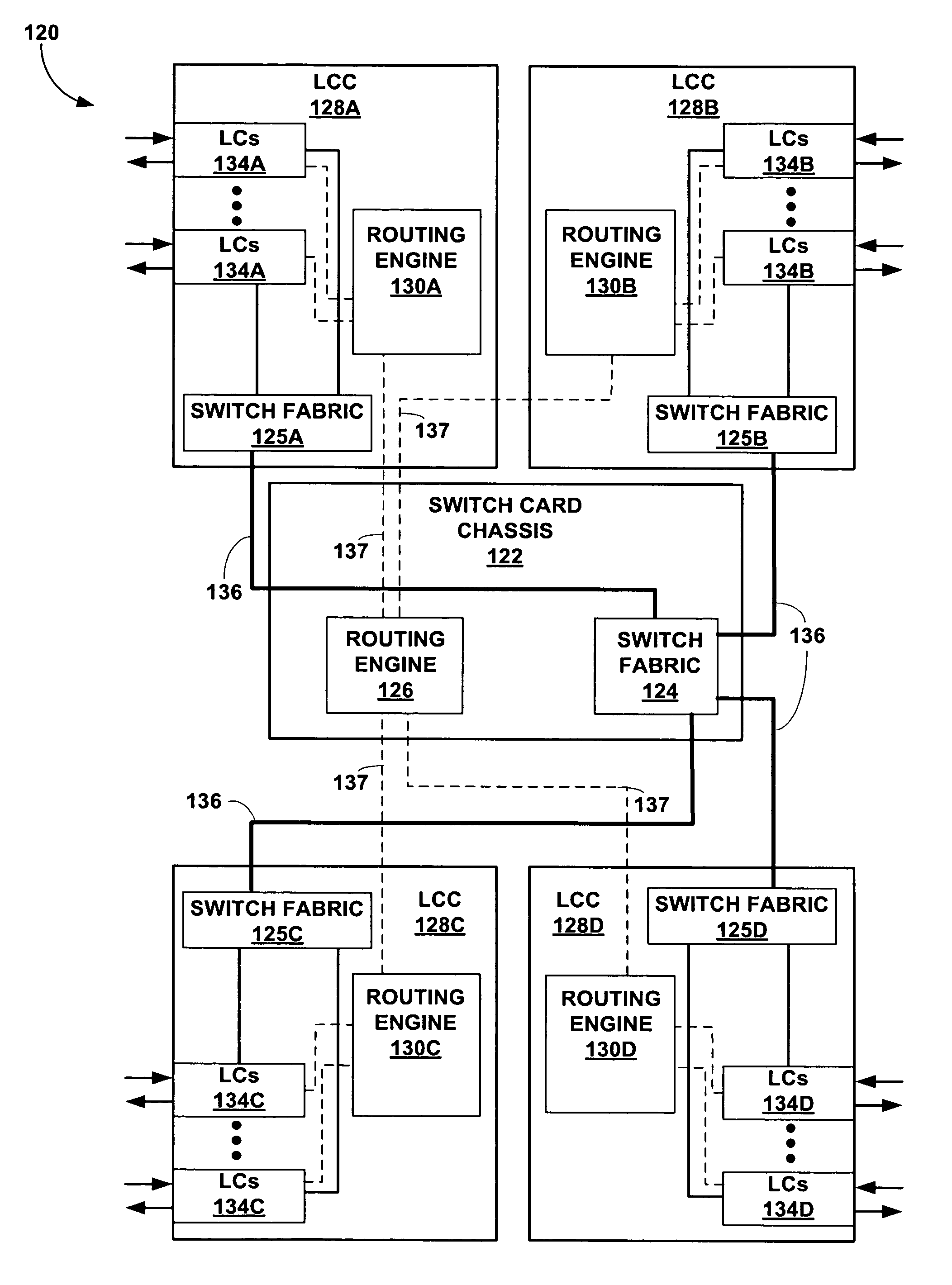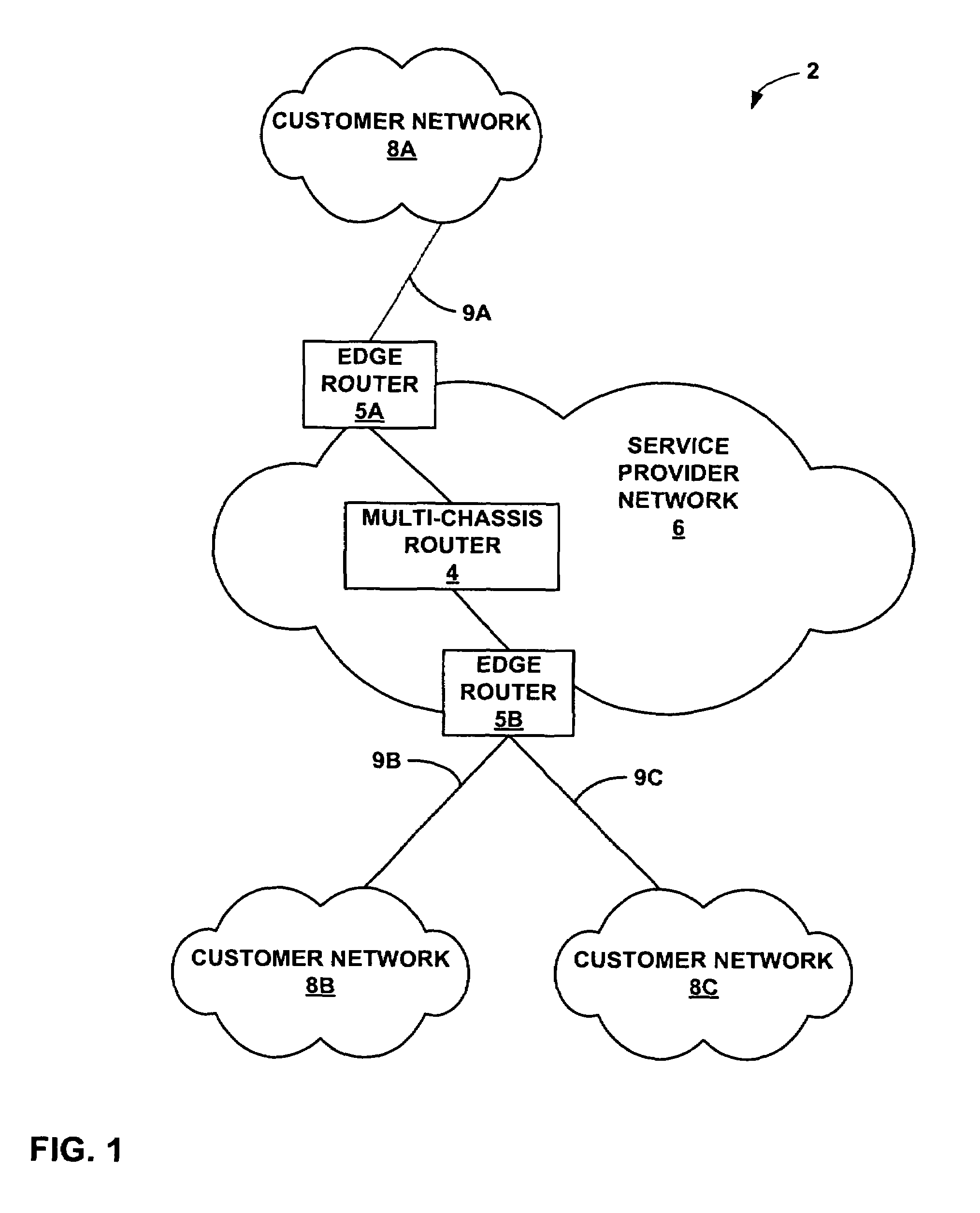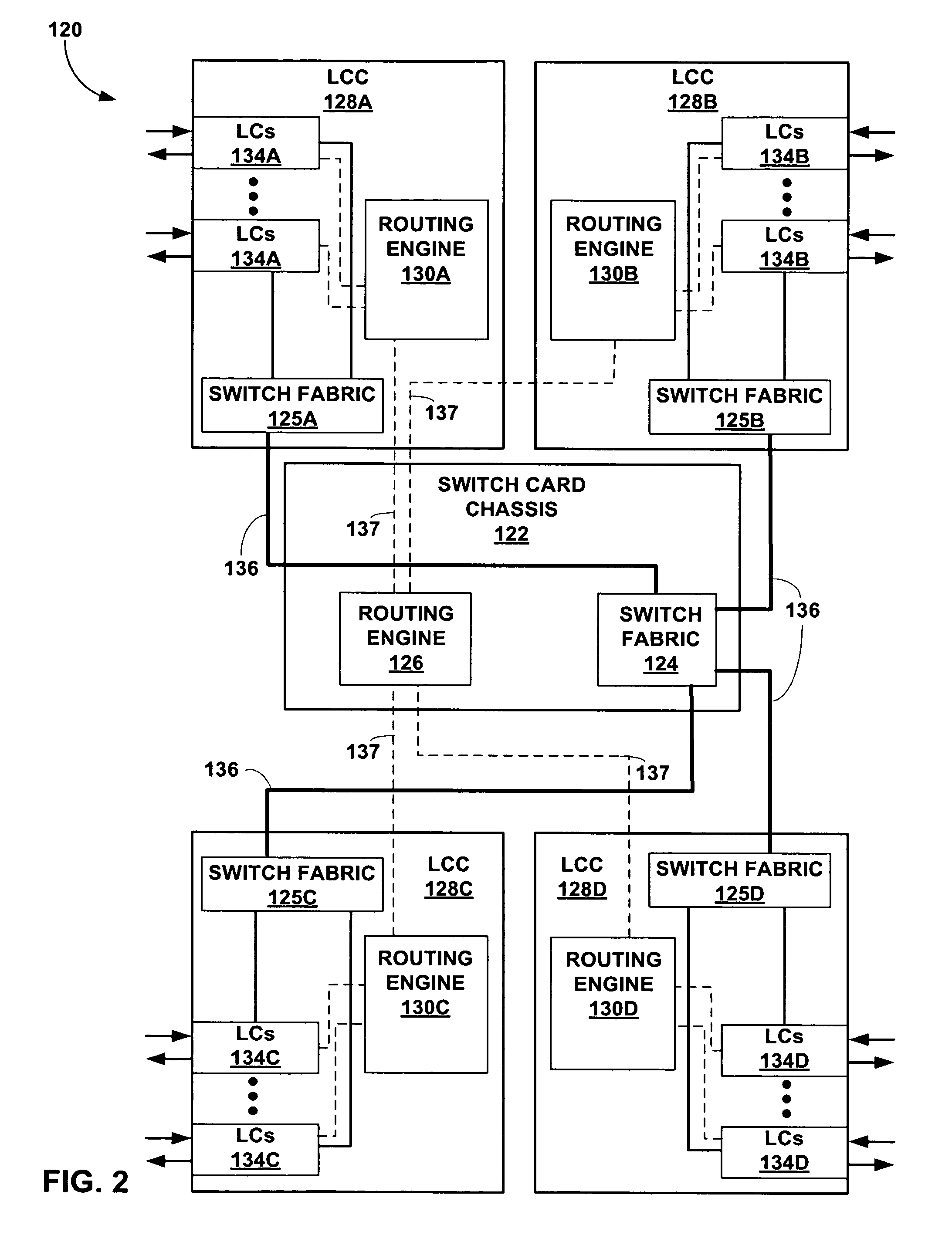Distributed solution for managing periodic communications in a multi-chassis routing system
a multi-chassis routing and distributed solution technology, applied in the field of computer networks, can solve the problems of insufficient response time to periodic packets, insufficient computing resources of the second router, and failure of the first router expecting the message, so as to increase the number of simultaneous periodic communication sessions, reduce the load of the scc, and more scalable routing architecture
- Summary
- Abstract
- Description
- Claims
- Application Information
AI Technical Summary
Benefits of technology
Problems solved by technology
Method used
Image
Examples
Embodiment Construction
[0025]FIG. 1 is a block diagram illustrating an example computing environment 2 in which service provider network 6 includes a multi-chassis router 4. For purposes of example, the principles of the invention are described with respect to the computing environment 2 of FIG. 1 in which multi-chassis router 4 communicates with edge routers 5A and 5B (“edge routers 5”) to provide customer networks 8A-8C (“customer networks 8”) with access to network 6. Multi-chassis router 4 may send periodic data, such as packets, to edge routers 5 in order to maintain an accurate representation of the topology of network 10. Multi-chassis router 4 may consist of a plurality of hierarchically arranged cooperative routing components operating as a single node within service provider network 6. In one embodiment, multi-chassis router 4 includes a switch card chassis (SCC) that operates as a control node and one or more line card chassis (LCCs) that operate as packet routing devices. The LCCs may contain ...
PUM
 Login to View More
Login to View More Abstract
Description
Claims
Application Information
 Login to View More
Login to View More - R&D
- Intellectual Property
- Life Sciences
- Materials
- Tech Scout
- Unparalleled Data Quality
- Higher Quality Content
- 60% Fewer Hallucinations
Browse by: Latest US Patents, China's latest patents, Technical Efficacy Thesaurus, Application Domain, Technology Topic, Popular Technical Reports.
© 2025 PatSnap. All rights reserved.Legal|Privacy policy|Modern Slavery Act Transparency Statement|Sitemap|About US| Contact US: help@patsnap.com



